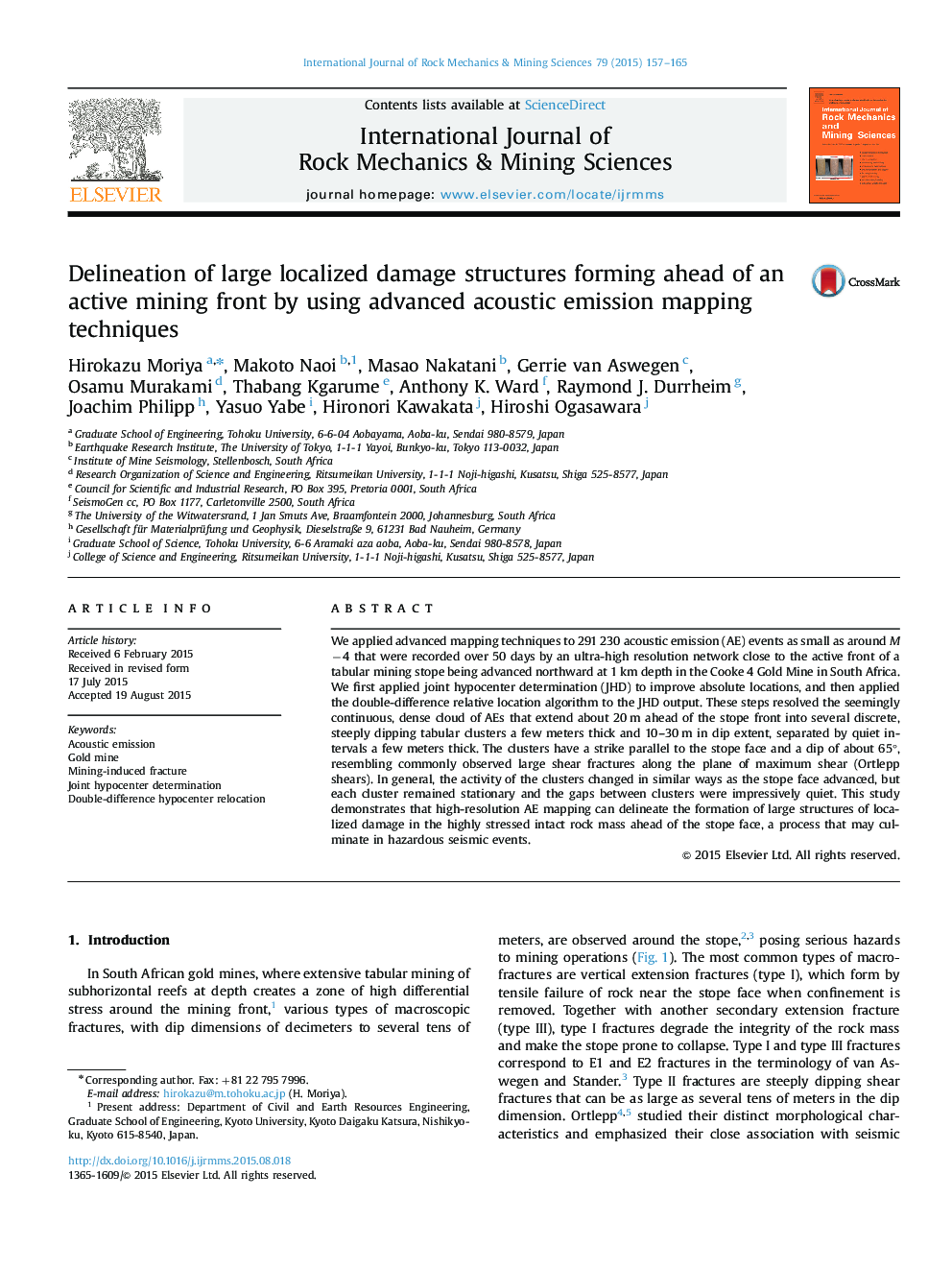| Article ID | Journal | Published Year | Pages | File Type |
|---|---|---|---|---|
| 7206484 | International Journal of Rock Mechanics and Mining Sciences | 2015 | 9 Pages |
Abstract
We applied advanced mapping techniques to 291 230 acoustic emission (AE) events as small as around M â4 that were recorded over 50 days by an ultra-high resolution network close to the active front of a tabular mining stope being advanced northward at 1 km depth in the Cooke 4 Gold Mine in South Africa. We first applied joint hypocenter determination (JHD) to improve absolute locations, and then applied the double-difference relative location algorithm to the JHD output. These steps resolved the seemingly continuous, dense cloud of AEs that extend about 20 m ahead of the stope front into several discrete, steeply dipping tabular clusters a few meters thick and 10-30 m in dip extent, separated by quiet intervals a few meters thick. The clusters have a strike parallel to the stope face and a dip of about 65°, resembling commonly observed large shear fractures along the plane of maximum shear (Ortlepp shears). In general, the activity of the clusters changed in similar ways as the stope face advanced, but each cluster remained stationary and the gaps between clusters were impressively quiet. This study demonstrates that high-resolution AE mapping can delineate the formation of large structures of localized damage in the highly stressed intact rock mass ahead of the stope face, a process that may culminate in hazardous seismic events.
Keywords
Related Topics
Physical Sciences and Engineering
Earth and Planetary Sciences
Geotechnical Engineering and Engineering Geology
Authors
Hirokazu Moriya, Makoto Naoi, Masao Nakatani, Gerrie van Aswegen, Osamu Murakami, Thabang Kgarume, Anthony K. Ward, Raymond J. Durrheim, Joachim Philipp, Yasuo Yabe, Hironori Kawakata, Hiroshi Ogasawara,
